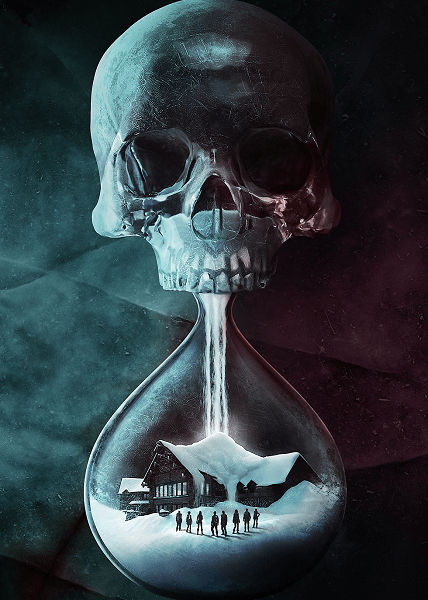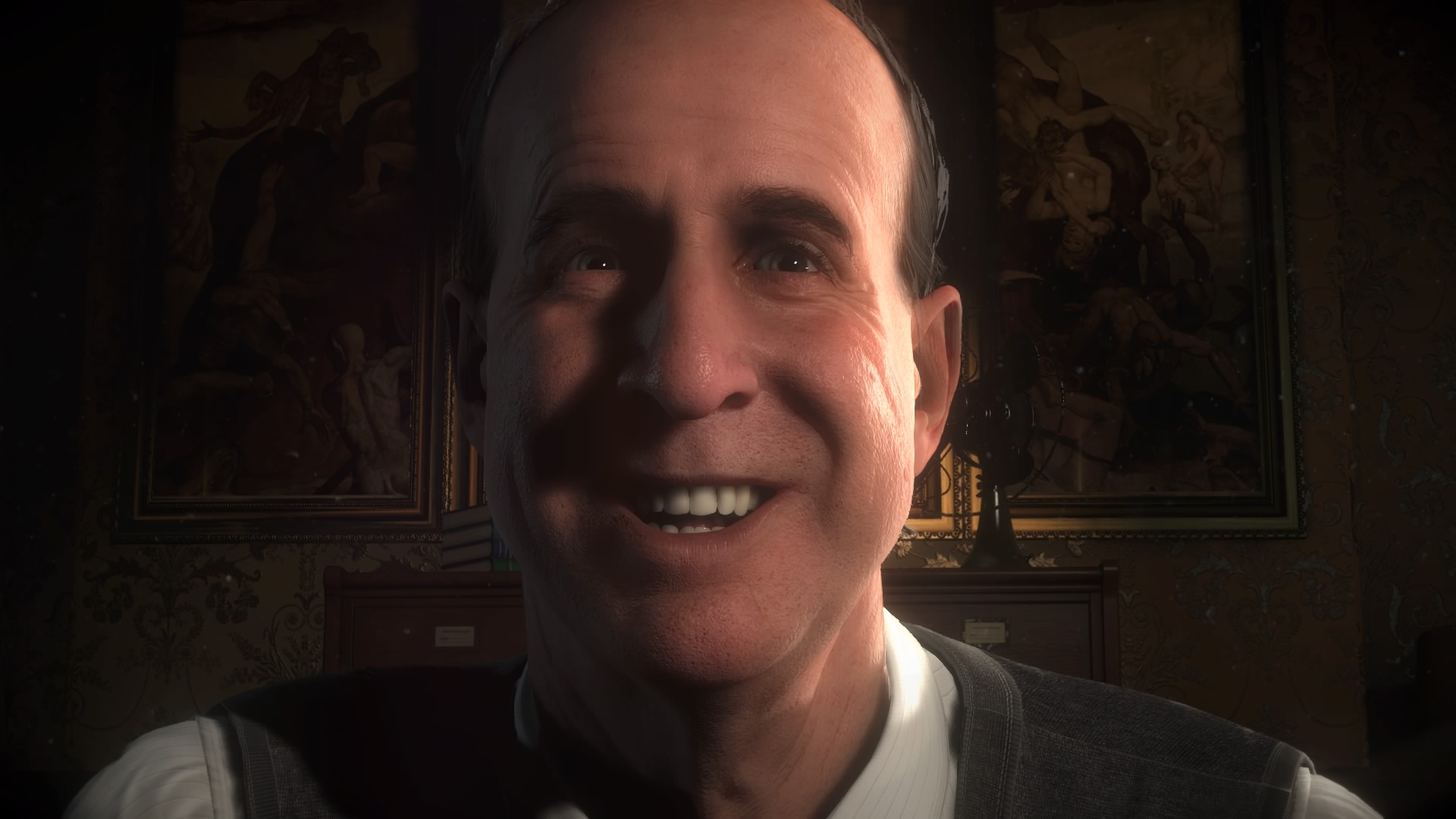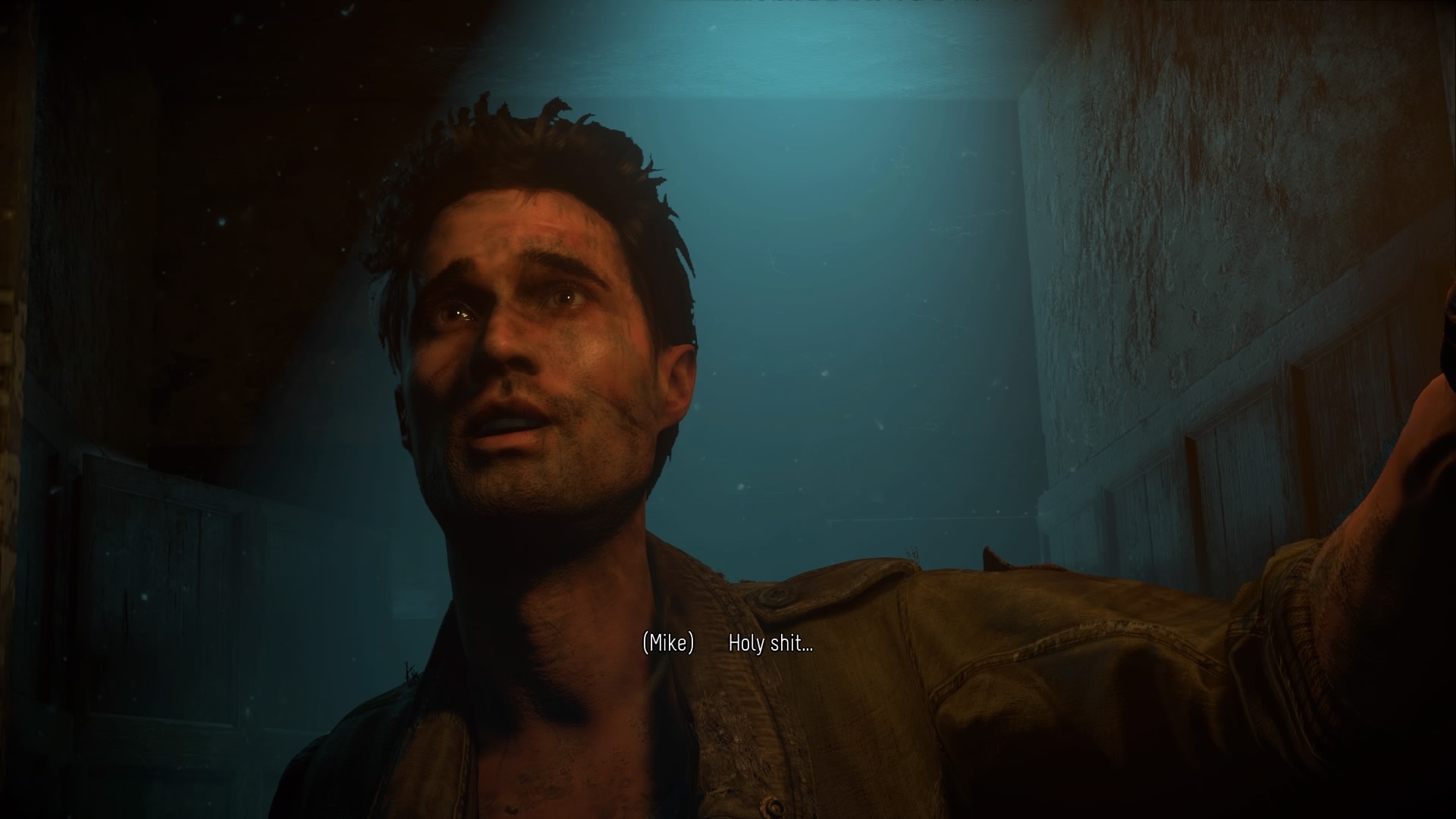
Until Dawn – A surprisingly good take on the horror genre
****
Reviewed May 07, 2016 on PlayStation 4
Leave a comment on Giant Bomb
Horror is not a genre I typically play - I frequently find jump scares to be silly, and whilst I appreciate psychological horror at times, I find it can quickly become uninteresting as maintaining the required level of tension over the course of a game is a difficult task. Until Dawn sidesteps these issues through a gleeful and liberal overuse of "teen horror" clichés, and it is clear that developers have a deep understanding of the genre. Though this use of familiar tropes makes the horror less effective (it frequently comes across as silly rather than scary), it enables the character work to come to the fore, which is the real strength of Until Dawn.
Each of the eight characters that the player controls over the course of the games is largely the embodiment of a stereotype from the horror genre - Matt is the jock, Chris is the comic relief, Emily is the overly arrogant and obnoxious girl, to name a few. In many cases, such stereotypical characters would work against a game, but Supermassive Games deliberate, tongue-in-cheek, overuse of these common traits makes it work. It enables the characters to feel instantly familiar, despite each being given little to no backstory, and lets the game explore the interactions between them.
Each of the characters is excellently acted by the cast, and they carry the game in many ways. Dr. Hill, a unusual and unsettling psychiatrist interviews the player as a number of points throughout the game. These scenes could easily be overlooked, as they serve as little more than a way for the game to modify upcoming scenes to accommodate the fears that the player chooses in these interviews. However, a compelling performance by well-known character actor Peter Stormare makes them instantly memorable, and illustrates how the excellent casting in the game makes it all come together, despite some narrative and gameplay shortcomings.
The game's story, much like its characters, can be described as "simple". Eight friends gather in a remote mountain cabin that is cut off from the outside world but for an unreliable cable car. The reason for their gathering is party, as well as to mark the one year anniversary of the disappearance of two of their friends from that very cabin. This combination somehow seems obvious to Josh (the brother of the two missing girls), though naturally the other characters expresses their uneasiness about the situation at various points throughout the game. Despite this apparent simplicity, the game takes its time to revel in teen horror's hallmark idiocy - characters split up at the perfect moment to potentially meet their end, people who are already on edge decide that scaring their companions is really funny, couples traipse through the woods to find somewhere to be alone, for example - and it is rather entertaining to see this unfold.
For the first half, the game hints at various supernatural elements, but the narrative remains relatively grounded and could be explained without resorting to the supernatural. However, a mid-game reveal renders this impossible, leaving the game feeling somewhat disjointed. The reveal is taken at face value by the group, despite there being fairly little to suggest that this is the true nature of the woods and the cabin, and it feels like a very sharp left turn to make without warning. Though the latter half of the game is well-done, and ramps up to genre tropes and idiocy to near-ludicrous levels, the fact that the characters are so willing to believe it immediately and without question is a little hard to swallow.
On a gameplay level, Until Dawn is very simple, and that appears to be a deliberate choice. Much of the time, it feels like watching one of the movies that was obviously the inspiration for the game. These segments also feature a number of Quick Time Events, in order to heighten the danger and potentially lead to a character's demise if a QTE is failed. Though effective at times, they are overused (such as 4-5 QTEs to scale a wall, with the only penalty for failure is that you have to start over) and can make the game a little tedious to play. There are also QTEs for, as an example, opening a gate which involve having to hold down R2 and make a certain motion with the right analogue stick. These are not fun to do, and feel like a contrivance reflecting the game's PlayStation Move roots.
A more egregious misstep is the use of the motion controls in the DualShock 4, requiring the player to hold the controller still for a few seconds. Thankfully infrequent, these sections can feel unfair as they occur without warning, meaning it is easy to fail them if not ready. A particularly poor section at the end of the game features about four of these in a row, and they are on a hair-trigger (I actually placed the controller down on a bed before one of these, and the vibration from the controller alone was enough to make it fail). It is tedious, and feels cheap - even if you did everything right, you can still fail. Despite the instructions say "Don't move!", I found that the best way to succeed at these is to tilt the controller slightly to counteract the movement the game thinks it is seeing (an illustration of the DS4 lightbar is displayed on the screen).
The game also features a number of collectables, which can roughly be divided into two categories - clues and totems. The clues are interesting in that they allow both the player and the characters to slowly piece together what is happening (and what happened in the past) on the mountain. The fact that characters behaviour and dialogue changes as a result of finding these clues makes them rewarding to hunt down, and can influence the path that the story takes.
Totems, on the other hand, show flash-forwards of potential future outcomes, and may guide the player to make certain decisions in the future. It is not always clear in the game if the characters also see these flashes, or if they are merely for the player. These are less enjoyable to find, and sometimes detract from the game. In one instance, a character is ratherly vocally shouting about how they need to hurry, then slowly bends down to pick up and examine one of these totems. Though not a major flaw, it very quickly removes all tension from the scene.
The player must also make choices at various points during the game. These frequently change that character's attitude towards other members of the group, and alter how upcoming scenes play out, though may also have more immediate (and deadly) consequences. These usually feel impactful, and that the story changes based on the player's decisions. Though I suspect there is some element of the illusion of choice at work, this isn't apparent on a single playthrough, much to the game's credit. Drastically different endings will be reached based on player choices (there is a path where everyone lives, one where everyone dies, as well as multiple results inbetween). On a single occasion, it did feel like the game forgot the choice I had made - after watching one of her companion's fall to his death, one of the characters continues to walk through the woods as if still looking for him. It's possible that this was deliberate (e.g the character is in shock / unwilling to accept the death), but it certainly stood out and felt strange.
Graphically, Until Dawn is something of a mixed bag, but overall is a very good looking game. Character facial animation and rendering is a high point, and looks startlingly realistic at times. The game is also very well framed, and each shot feels deliberately composed. This does lead to some control issues when the camera shifts whilst controlling a character, as the directions on the analogue stick adjust to match, but only after changing which direction is being held. This can take a little getting used to, but overall is a minor distraction at worst.
However background objects sometimes seem to have very flat, or unnecessarily shiny, textures, and character's hair and similar objects take on a shimmery look when further away from the camera. Character animations can also appear to stutter at times (infrequently), almost as if they are running at a lower frame rate than the surrounding scene. This can be a little distracting at times, but do not detract from the overall experience.
Overall, Until Dawn is a game that knows exactly what it is - a gleeful mash-up of horror genre tropes that succeeds by wearing its influences on its sleeve, excellent casting, and using well-chosen gameplay elements that give the player choice but fit with the movie-like aesthetic of the game. Despite its flaws, Until Dawn is an easy game to recommend, both to fans of and newcomers to the horror genre.



